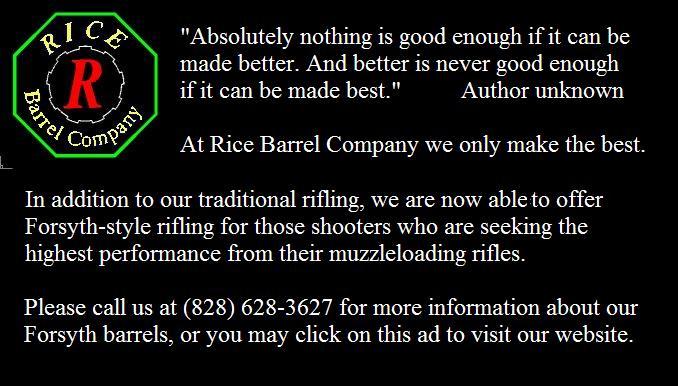It would seem that a solution to this very unsafe condition might be rather complicated, perhaps involving modification of the hammer, trigger, or both. Certainly alterations that would negatively impact the value of a shootable collectible.
For the target shooter this is not too much of a problem as his normal regimen is to simply cock the hammer, cap the nipple and immediately fire the shot.
However, if one is carrying such an underhammer arm in the field there are few options for safely carrying. One could carry the arm with the hammer cocked and the nipple left uncapped. At the sight of target or game, the nipple could then be capped and the shot taken. Not really practical as one should be focusing on the game, but instead is fishing for a relatively tiny cap – perhaps doing so with cold, stiff, and maybe even wet fingers – and then attempting to carefully and accurately seat it firmly on the nipple. Then find the game - again - and take the shot. Yes, you could use a capper to speed things up a bit, but still a considerable delay and distraction is involved.
Been there, done that; it’s slow and not really practical in most instances.
One could also cap the nipple and gently lower the hammer onto the cap and pray that the hammer is not inadvertently struck by dropping the gun or by bumping into some object along the trail, perhaps as the result of tripping and falling, thereby firing the gun. Have done that one, too. Convinced myself that it would be okay 'cause I'm a rather careful kind of guy. Thankfully there was no falling, nor any accidental discharge. But I was walking on eggshells the whole time the hammer was resting on the cap. I think Murphy had that weekend off and I was very lucky.
Hard on the nerves, unsafe; so not really practical, either.
It was a totally unrelated incident on the game trail that inspired the solution to the dilemma of carrying an underhammer in an unsafe mode. I’ll spare you the gory details, but suffice it to say that it was a broken twig that rendered my rifle inoperative that flipped on the light for me.
The solution is so cheap and easy that there is now no excuse for carrying your underhammer in an unsafe condition if it was not designed with a safety notch.
 Simply purchase a half-inch diameter wooden dowel (or if you’re really cheap whittle a twig) and cut it into 5/8” to ¾” lengths. Then cut or whittle a shallow notch on one side of each piece as shown in the sketch.
Simply purchase a half-inch diameter wooden dowel (or if you’re really cheap whittle a twig) and cut it into 5/8” to ¾” lengths. Then cut or whittle a shallow notch on one side of each piece as shown in the sketch.After you’ve loaded and capped the gun, the idea is to use the dowel as a hammer block. That will allow you to cap the nipple and carry the gun with the hammer resting upon the dowel and not on the capped nipple. The hammer rests in the notch in the dowel while pushing it up against the bottom flat of the barrel, thus keeping the hammer off the cap.
When the big moment arrives, you simply cock the hammer and the dowel will usually fall free and away from the gun as you bring it to aim.
BTW, there is no need to pick up your used dowels as they are, after all, “green” and will naturally decompose into the environment. (Who says shooters aren’t green conscious?) Carry a few of them in your pocket and you're good for the day.
You may have to adjust the notch or even the diameter of the dowel to get the proper “fit” between the hammer and the bottom of the barrel on your particular style of underhammer to achieve that all important clearance between hammer and cap.
In case you haven’t figured it out, the notch just keeps the dowel snugly in place. In making yours, one thing to be aware of is the shallow nature of the notch. If it’s too deep and narrow, the hammer could become wedged in the notch and the dowel will not fall free of the hammer when it is drawn to cock. On the other hand, if the notch is too shallow, the dowel may be coaxed out of position by Murphy’s Law leaving you in a rather dangerous condition. Experiment a bit and you’ll figure it out.
So, there you have it - cheap and easy. Once again, Low-Tech reigns triumphant.
.




1 comment:
I love it. K.I.S.S. technology. They are kind of like golf tees. Reusable but disposable at the same time.
Post a Comment